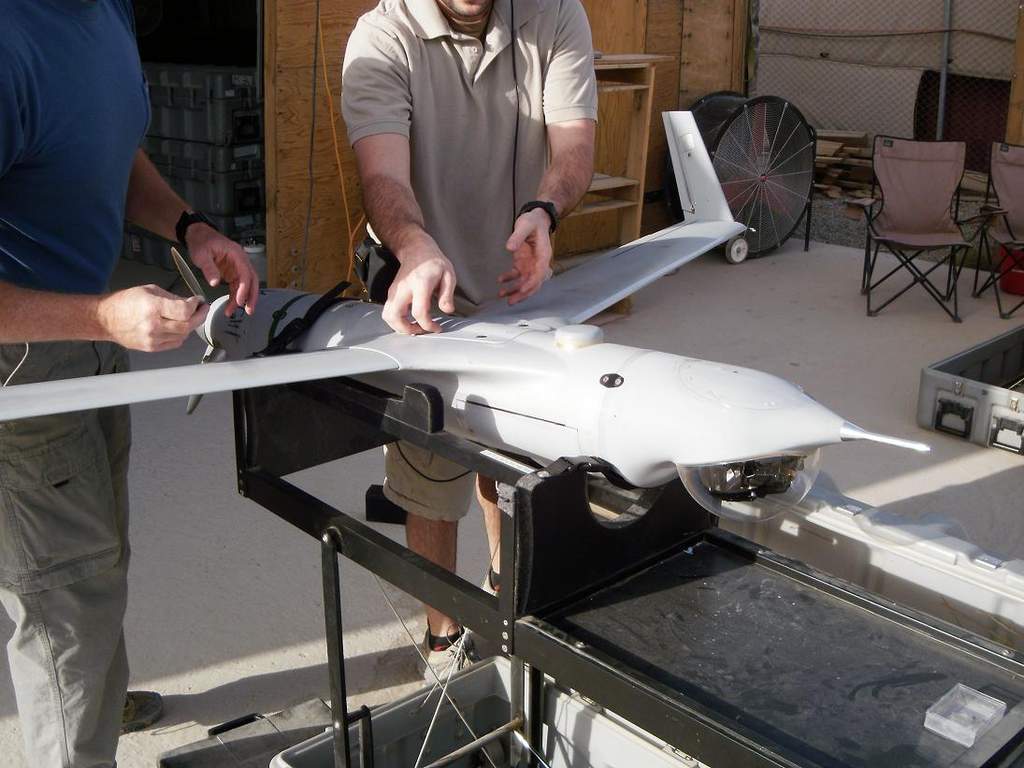Not to be outdone by Navy Aviator Heroine, Vika 1 made a UAV sky writing
video. The last video of skywriting was in 2008, using 1Hz GPS, no
barometer, & the T-Rex. It's the most technology ever thrown at a
single word. To this day, no-one else in the world has done it, believe
it or not.
Note ground station in bottom center.
SHORT WAVE IR
Also of interest are some short wave IR cameras if you're having trouble
seeing through haze. They look small enough to put on a model. If you need to know the price, you can't afford it.
http://www.sensorsinc.com/index.html
GROUND VS. EMBEDDED
Well, we've been using ground based autopilots since Fall 2008. It's
been much cheaper than embedded autopilot. Crashes don't destroy
anything expensive. Every vehicle shares the same ground based computer
& uses a real simple board. Regarding convenience, would say it's
equivalent to embedded autopilots.
You've got easy configuration, a full development environment,
potentially more neural network capability, but have an autopilot in 2
halves. Sensor acquisition & rate damping can only be done on the
airframe. Getting high bandwidth, reliable, realtime communication is
still complicated. Radios haven't evolved.
2 different runtime environments are required to do the job of 1.
Communication isn't perfect. Some data is lost & flight is not as
stable as it could be if all the data was getting through, especially
with GPS where 1 lost packet is .25 sec of data.
Now that ArduMU or ArduShield or whatever is flying quad rotors, it's
tempting to switch to that. If we were just starting now, we would have
just bought Ardu parts. The main problem is the extra stuff for
commercial RC transmitters & fixed wings we'd never use. The cost is
also still much higher & it still doesn't have C language flight paths.
Then there's the lure of 32 bit ARM. Reverting the ground based
autopilot to embedded is a lot easier with 32 bits.
MARCY 2 NOTES
Rebuilt the 900Mhz ground station radio with a single sided board after
it started getting flaky & Marcy 2's double sided board failed completely. It's still flaky.
The 900Mhz FSK chips have become too flaky to fly recently. An unknown
state change is happening on the PIC which can only be fixed by
resetting it, not the FSK chip. Other problems seem due to the
inaccuracy of home made boards. Marcy 1's flight board has been
perfect, ironically.
With all the problems with 900Mhz FSK chips, we're leaning towards
abandonning indoor projects, especially Marcy 2, & just focusing on a
large outdoor monocopter with the complete XBees, GPS, & SCP1000. Want
to fix the problems with Marcy 1 as an indoor, manually controlled
monocopter 1st.
She's leaning towards reverting to a bicopter to fit indoors, but the
advantage with monocopters is having the most airfoil in the highest
speed air for the least weight. That leads to longer wings.
Chord length & balance beam size are related. Wider chord length
requires longer balance beams. That leads to long, skinny designs.

